179 Vote
At the Met, the tanbur is back
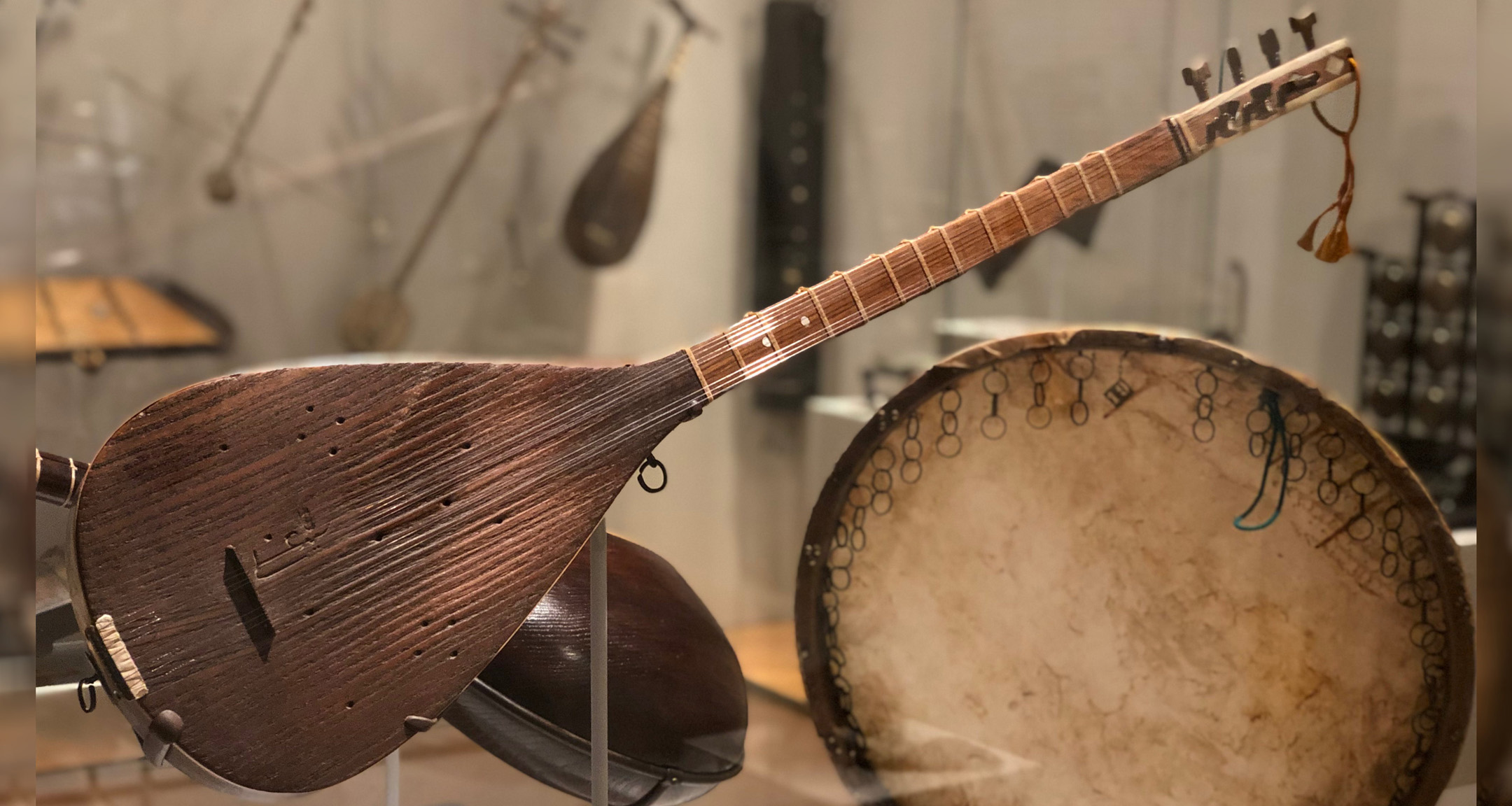
Post updated on 8 August 2019.
The tanbur is back… A few months ago, in 2018, a couple of steps away from the oldest piano in the world, a showcase was inaugurated in the department of musical instruments at the Met (Metropolitan Museum of Art in New York). Dedicated to a few “famous musicians” of the 20th century, it featured a Benny Goodman clarinet next to a guitar that belonged to Andrés Segovia as well as one of Ostad Elahi’s tanburs, crafted by the lute maker Nariman, along with a video including explanations and archived images that harked back to the 2014-2015 Sacred Lute exhibit, that we covered here.
The Met has since then added new acquisitions to its collection: a daf (Kurdish tambourine) and several lutes (a Persian setar, a choghur, and a five-string tanbur whose characteristic sound can be heard here: click on sample 9368). These instruments that once belonged to Ostad Elahi are now displayed together in one showcase in the vicinity of other musical world heritage treasures (17th century mandolins, theorbos, virginals and viola da gamba, a Stradivarius, a Chinese pipa, a Japanese shakuhachi, an African mbira,…).
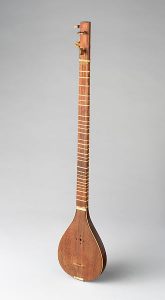
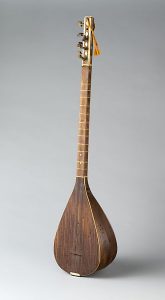
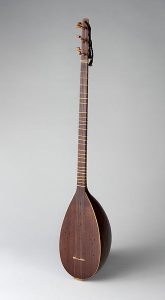
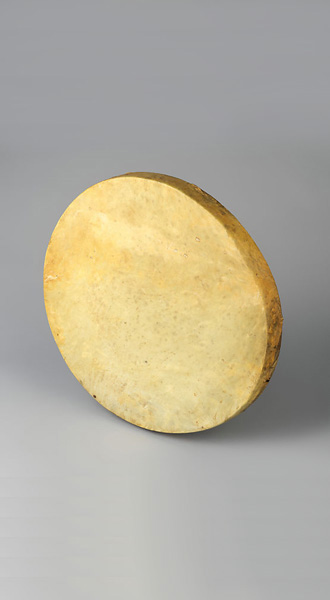
To inaugurate this addition, two events organized at the Met itself enabled the public to become more familiar with the musical legacy of Ostad Elahi. To start with, what better way than to be directly exposed to the music itself, through the person who is today its most eminent legatee: Ostad Elahi’s son, Dr Chahrokh Elahi. His public performances being so rare, such events inevitably become unique. For more than half an hour, the several hundred listeners gathered in the museum’s grand auditorium on the evening of the 5th of April 2019 were transported by a particularly intense performance of Shâh Hoseyni, an emblematic piece of Ostad’s repertoire. The performance was recorded by New York Public Radio for New Sounds and is available as a podcast (below at 27’20’’ or here). Subsequently, the double bassist Renaud Garcia-Fons, accompanied by his ensemble, prolonged this first voyage by taking the wealth of harmonics of the tanbur through new musical territories.
From 27’20’’ to 46’00’’: The Musical Legacy of Ostad Elahi – Live performance of Chahrokh Elahi at The Metropolitan Museum of Art on the 5th of April 2019
The next day, a panel gathered to evoke, in words this time, the place of music in Ostad Elahi’s work. With WNYC’s (New York Public Radio) producer John Schaefer as master of ceremonies, the following guests were invited to share their views on the subject: David Levitin, a cognitive psychologist and neuroscientist known for his best-selling books on the neurobiological foundations of musical perception; Theodore Levin, specialized in the music of Central Asia and a professor at Dartmouth College; and Leili Anvar, an orientalist whose contribution centered more specifically on the links between music, poetry and spirituality.
The discussion was launched by the premiere screening of a film entirely dedicated to the musical life of Ostad Elahi. Alternating archival images, previously unreleased interviews and performances, this documentary codirected by John Schaefer offers a musical portrait of Ostad Elahi that is both informative and moving. It unveiled certain aspects of his extraordinary creativity, but also of the impact of his playing on a number of people who heard him during his lifetime, or who simply discovered him through the recordings published over the last twenty-five years (the latest of which was released as a box set co-produced by the Met entitled “The Musical Legacy of Ostad Elahi at the Met”, including two CDs: Resilience and My Beginning and My End).
It is impossible to sum up here the rich and lively discussion that followed the projection of the film. Some of the topics raised included the spirit of tradition and the nature of creative genius, the power of rhythm, the miracles of improvisation, the link between music, poetry and mysticism, as well of course as what generally makes art a medium for self-realization and meditative communication with more subtle dimensions of reality. As Leili Anvar rightly recalled on that occasion, one is not minimizing the importance of Ostad’s musical legacy when viewing it in light of what was truly for him the gist of his whole approach: a personal and rigorous experimentation on the path of spiritual perfection and self-knowledge, most clearly illustrated by his writings and words. Thus put into perspective, the music of the tanbur, beyond aesthetic delight or intellectual exploration, is primarily a means for intensifying one’s connection with what Ostad called “the Source”.
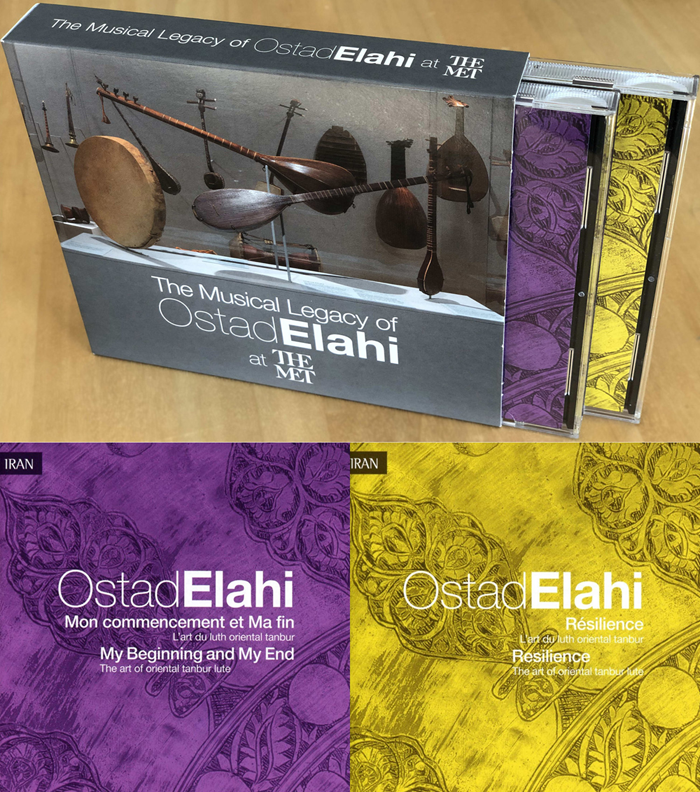
Update (8/8/2019)
The video recordings of the events organised on the 5th and 6th of April 2019 are now available on the website of the Met. You can watch them below:
The Musical Legacy of Ostad Elahi – Musical event at the Metropolitan Museum of Art on 5 April 2019
The Musical Art of Ostad Elahi – Panel discussion at the Metropolitan Museum of Art on 6 April 2019
 This work is offered under a Creative
Commons licence
This work is offered under a Creative
Commons licence

 News
News Podcast
Podcast


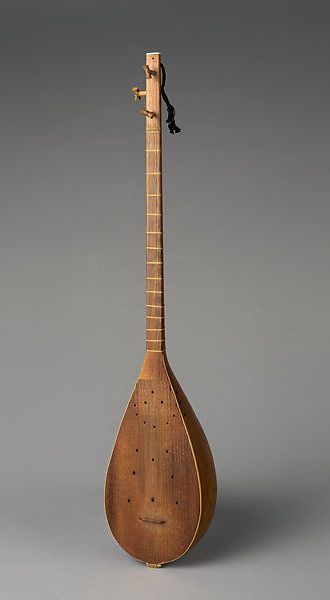


Fantastic and indescribable just listen… Thank you very much.
This is a beautiful presentation of the musical instruments of Ostad Elahi which is proposed to the discovery of visitors of the MET.
Wonderful summary of a thought-provoking, inspiring and educational event.
These two CDs are so great! On beginning of the last track (6-Suite de Jelo Shahi) of the CD “My Beginning and My End” you can hear Ostad’s prayer. His humble tone of conversation with the Source has inspired and made me understand what my conversation with the Source should sound like. It also deepens my connection each time I listen to it before my prayer.
I bought them both to have the booklets, but I am glad that both CDs were also launched on streaming platforms such as “Spotify” and “Apple Music” so that I can always have them at my figure tips and listen to them whenever I want.
thank you Yan!
Wow! The new video of the event “Musical Legacy of Ostad Elahi” posted on The Met Museum website! This is what I was impatiently waiting for.
Here is link:
https://www.metmuseum.org/metmedia/video/concerts/the-musical-legacy-of-ostad-elahi
Thank you, Yan,
I really enjoyed watching the video. It was awesome. I really appreciate it.
Great job Yan. Thanks a lot.
The multi-instrument exhibition in the Met is perfectly arranged. There is a bench right in front of the case and if you sit in the right place you are able to hear and see the video playing the recording of Dr. Charok Elahi in the background. It is a special little oasis to appreciate the mastery of the Ostad Elahi’s music Thank you for this article. I hope that everyone can get a chance to see it.
Thank you Yan,
I really enjoyed watching the video. It was awesome. It made my day. I really appreciate It 😃
Thank you so much for the amazing video. I enjoyed it.
In this text, it was pointed out that this music transcends the mind and is actually a means of connecting to the soul. How can we distinguish between the effect of the music on the soul and on the mind?
Intriguing question Simon Jeoff. I have been thinking about this for several months now, after I watched the video at the Met and also heard David Levitin talk about the neurological aspects of such music. I am sorry but I have to add another layer to your question! How this music can effect the brain and create new neurological pathways. How are these new pathways mapped out onto our mind and what are the effects, and how is the mind connected to our soul and what are the effects on the soul? Is there a connection between these three layers? Or does this music have a direct effects on the soul? If so in what way?
I did some research regarding both questions.
I read on OstadElahi-InDepth.com that:
“Music impacts the specific “music processing” regions of the brain, through which it impacts the emotional centers of the psyche and soul.” and “Music facilitates communication with the Source.”
I also read somewhere else that by listening to music the way we think can be changed and we can access another level of our consciousness.
So, in summary, there are 3 benefits:
1- the emotional centres of psyche and soul are triggered.
2- connection to the Source is facilitated.
3- we can access a deeper level of our consciousness and think differently.
Thank you Joe, this is helpful. I also came across this TED talk by Dr. Donald Hoffman. He is saying the relationship between brain activity and conscious experience is still a mystery and I believe he is trying to solve it mathematically! It maybe worth watching https://bit.ly/2HjYm96.
Plato says: “Music is the movement of sound to reach the soul for the education of its virtues.”
So, maybe music can be really helpful in the process of putting ethical principles into practice.
Also, Ostad Elahi says: “What matters is a heartfelt connection rather than music for its own sake.”
So, Music may enhance our connection to the Divine.
Thanks for the article and videos. Can anyone provide a transcript of the second video, the panel discussion ? I can’t understand what they say.
Thank you so much for uploading the video recording of the event.
As it is mentioned in the video, Ostad Elahi added the 3rd string to the Tanbur. It is magical how he creates the whole musical complexity by such a simple addition to the instrument, as if he creates complexity out of simplicity.
Thank you so much for the amazing video.
I really enjoyed it. I really appreciate it.